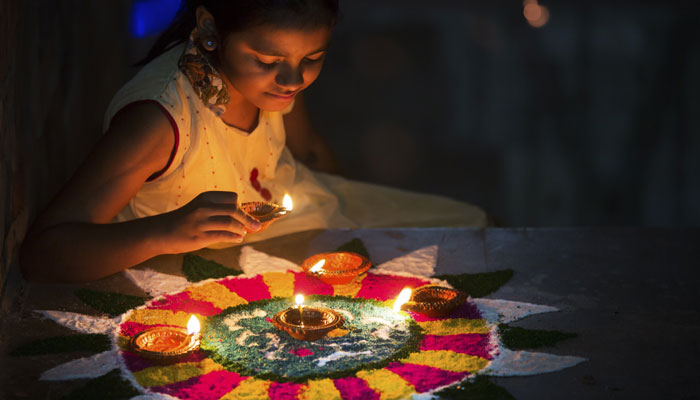It’s that time of the year when colours adorn the threshold of your abode and you spend hours making your rangoli look beautiful. But have you ever really wondered why rangolis form an essential part of festive celebrations in India?
Well, in Hinduism, every religious tradition or gesture is symbolic of a deeper meaning. Rangolis are not meant for mere beautification of the house but are supposed to prevent evil from entering the home. Here’s an explanation to support the age old belief and practice. Both positive and negative energy dwell in the atmosphere.
They seek refuge as and when they are provoked by us. The saying ‘You reap as you sow’ aptly fits into this situation. The reason why we say we must think positive is because we tend to invite positivity by thinking constructively and being optimistic. Negative thinking is never straight. Rangoli designs always look complicated and now you will know why. The negativity that is in the air gets entangled in the complexity of the rangoli design and fails to enter the house.
Hence rangolis absorb evil and prevent negativity from harming us. They also remind us to keep thinking positively, so that we can make our lives prosperous.
Traditional rangolis were made of rice powder and with time, people started using variety of colours. Many aren’t aware of the principle of `Vasudaiva kutumbakam` in Sanatana Dharma (Hindusim) meaning `the whole world is one big family`, and the concept of ‘live and let live’.
The reason why our predecessors used rice powder was to feed birds, insects and the other lives that thrive in the soil. And this Diwali, when you put rangoli, remember you are not adding to the decorations of your house but also making your house an epicenter of positive energy. Also try using natural colours so that you do not end up harming your skin and the uninvited guests who quietly eat away your rangoli!






